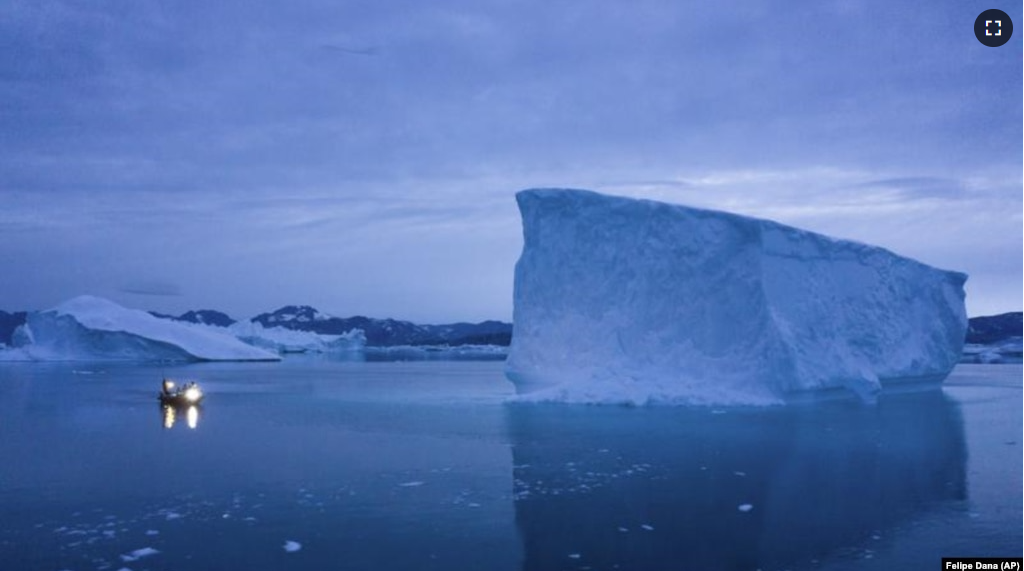A study published Monday predicts that melting ice in Greenland will cause sea levels around the world to rise by at least 27 centimeters by 2100.
This would be more than double an earlier prediction by a United Nations body. Last year’s Intergovernmental Panel on Climate Change report predicted a sea level rise of six to 13 centimeters by the year 2100.
The researchers studied the difference between the amount of ice that accumulates on Greenland’s glaciers and the amount of ice that melts at the edges of the glaciers. Snowfall in the mountains of Greenland flows down and feeds the glaciers. But in recent years, there has been less snow and more melting. The scientists said this has created an imbalance, and melting is exceeding the amount of ice accumulation.
The study appeared in the scientific publication Nature.
The researchers said, even if global temperatures do not rise above current levels, the ice at the edges of Greenland’s ice sheet will continue melting.
Richard Alley is a glaciologist at Penn State University who was not part of the study. He said the melting ice is similar to what happens when an ice cube is put in a cup of tea. He said that glaciers will continue to decrease in size because they are in warmer air, just like an ice cube will melt if placed in warm tea.
The researchers predicted that 3.3 percent of Greenland’s ice will melt. One writer estimated that more than 110 trillion tons of ice is going to melt.
William Colgan helped write the study. He studies glaciers at the Geological Survey of Denmark and Greenland. He described the ice this way: “It’s dead ice. It’s just going to melt and disappear from the ice sheet.”
The researchers used the same method that is used to study ice loss on mountain glaciers. But they extended it to include all of Greenland.

Some places further away from Greenland would get more sea level rise than some places closer to Greenland, such as the East Coast of the United States.
The 27-centimeter rise would be in addition to increases in sea levels from normal tides and storms. Ellyn Enderlin is a geosciences professor at Boise State University who was also not part of the study. She said the sea level rise “will have huge societal, economic, and environmental impacts.”
Leigh Stearns of the University of Kansas and Sophie Nowicki of the University of Buffalo are both ice scientists. They said the study did not support its prediction that the sea level rise would take place by 2100.
Colgan, the co-writer of the study, answered saying the research team does not know how long it will take for the ice to melt. He said it might happen by 2100 or by 2150 at the latest.
Colgan also said that the sea level rise could be even bigger than the study predicts. He said the melting could produce a sea level rise of 78 centimeters. In 2012, the difference between adding and subtracting ice was the most out of balance. Colgan asserted that if Earth starts to have more years like 2012, then the melting could produce a sea level rise of 78 centimeters.
Colgan added, “That’s how climate change works. Today’s outliers become tomorrow’s averages.”
I’m Andrew Smith.
This story was reported by Seth Borenstein for the Associated Press. Andrew Smith adapted it for VOA Learning English.
____________________________________________________________________
Words in This Story
accumulate –v. to increase in amount
glacier -n. a large body of ice, usually moving slowly down a valley or slope
imbalance -n. not being in equal amount
exceed -v. to be more than or greater than
glaciologist -n. a person who studies and researches glaciers
geoscience -n. the sciences dealing with the earth, such as geology, geochemistry, and geophysics
impact –n. an effect or influence
outlier -n. a number, person, or thing that is not usual within a particular group
